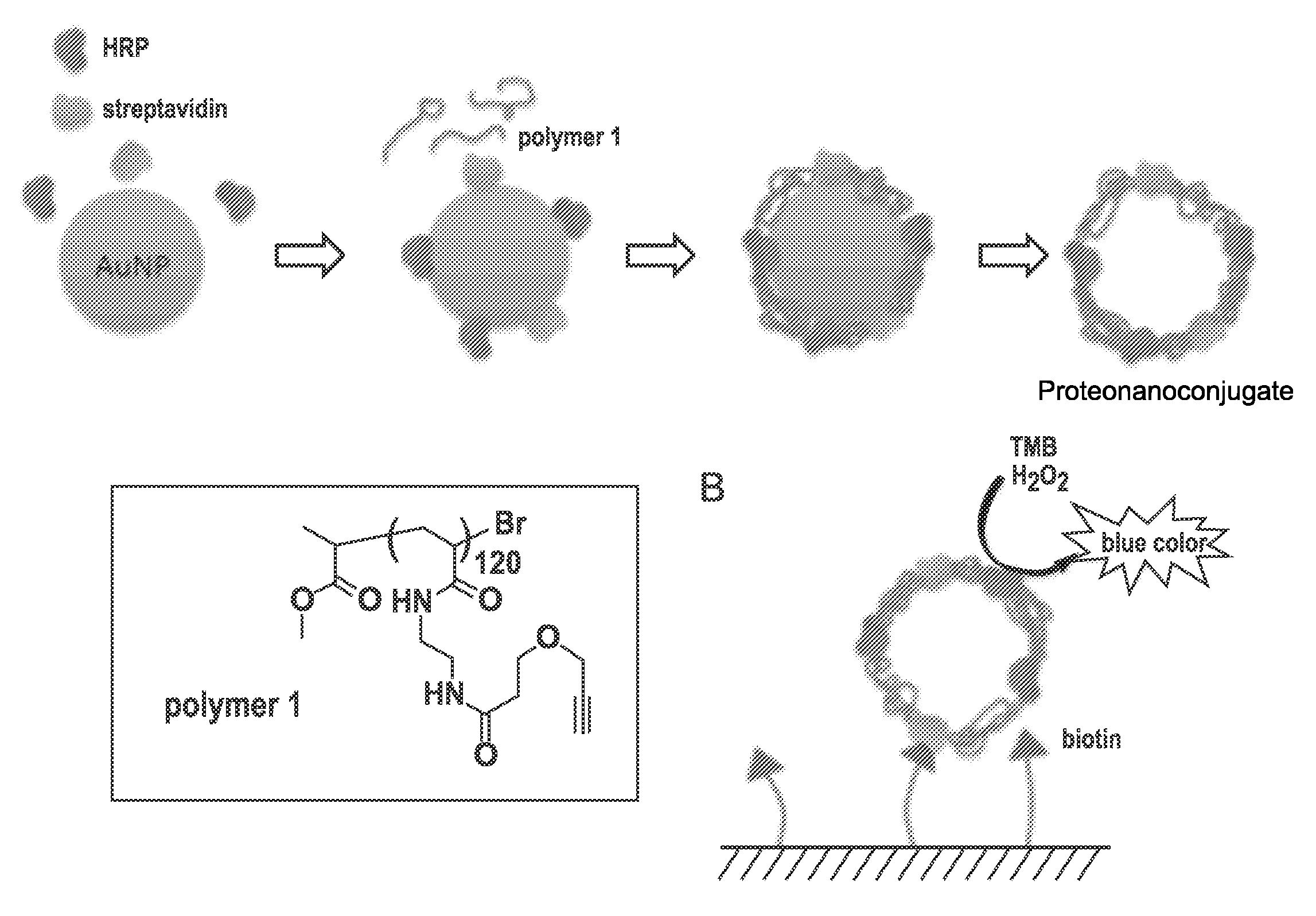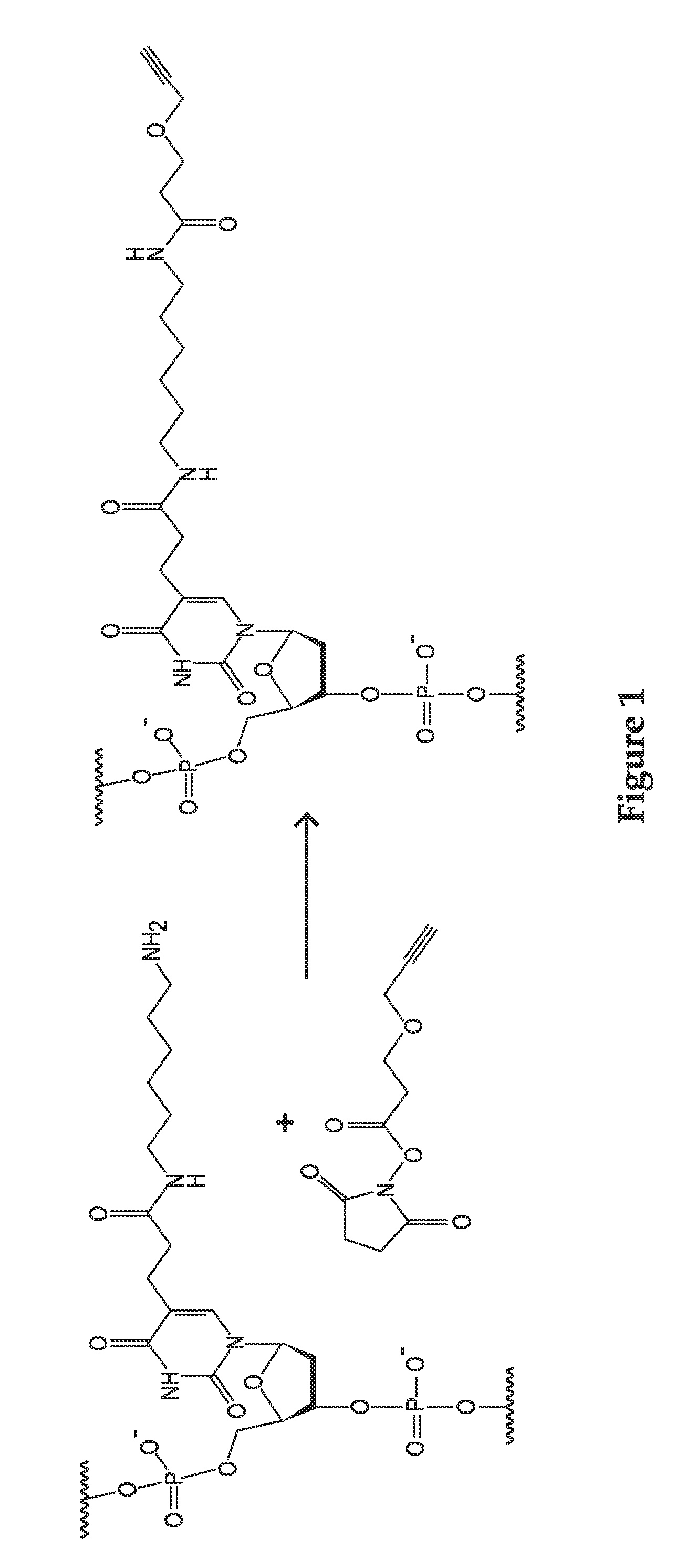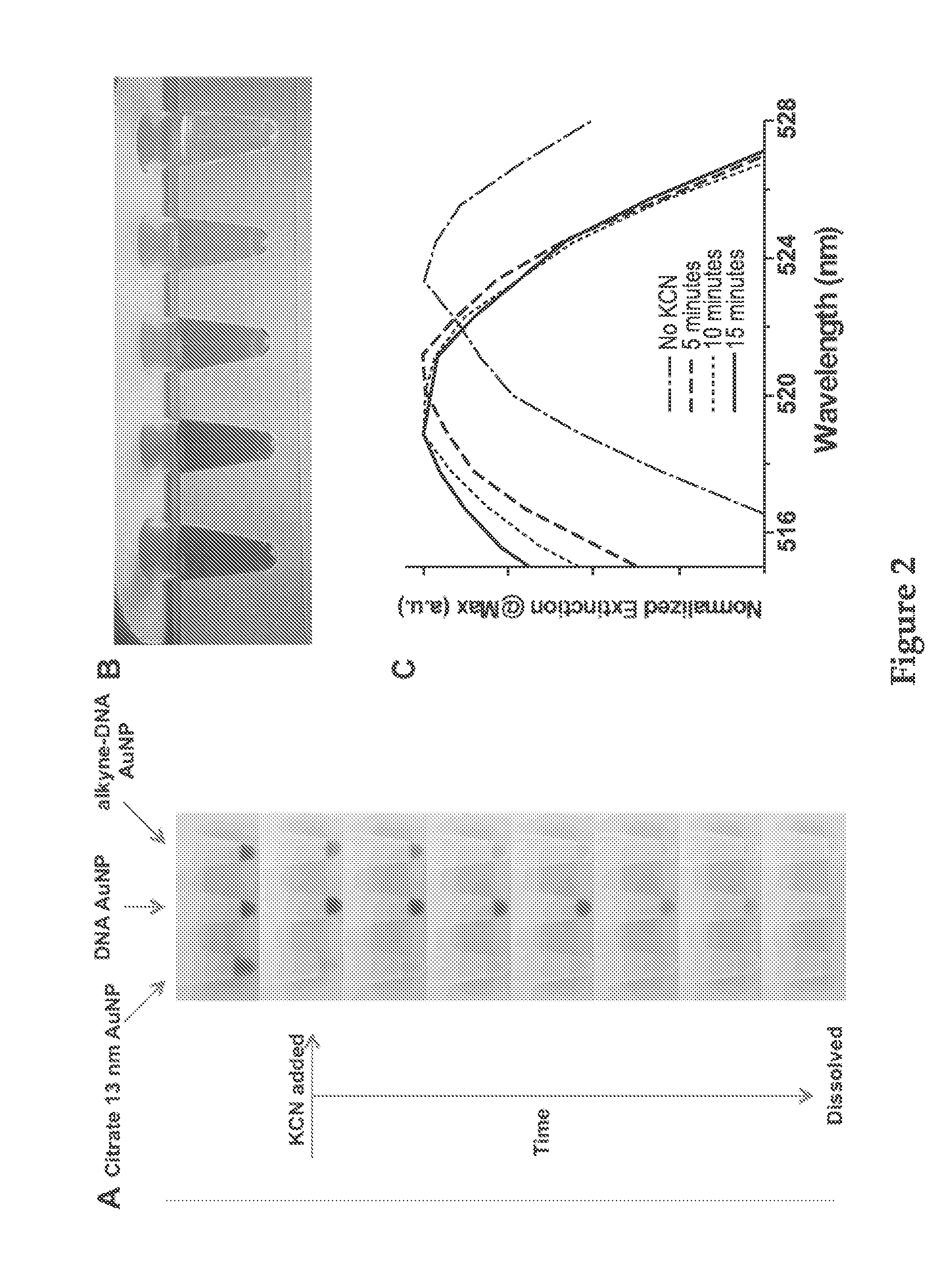Templated nanoconjugates
a technology of nanoconjugates and nanoconjugates, which is applied in the direction of powder delivery, fluorescence/phosphorescence, inorganic non-active ingredients, etc., can solve the problems of inability to achieve desired homogeneity and morphology, and the inability to deliver nucleic acids into mammalian cells. , concerns have arisen over the clearance/persistence and toxicity of core materials in vivo,
- Summary
- Abstract
- Description
- Claims
- Application Information
AI Technical Summary
Benefits of technology
Problems solved by technology
Method used
Image
Examples
example 1
Materials
[0363]All materials were purchased from Sigma-Aldrich and used without further purification, unless otherwise indicated. TEM characterization was conducted on a Hitachi H8100 electron microscope. NMR experiments were performed using a Bruker Avance III 500 MHz coupled with a DCH CryoProbe. DLS data were acquired from a MALVERN Zetasizer, Nano-ZS. IR results were obtained from a Bruker TENSOR 37, and analyzed using the OPUS software. MALDI-TOF measurements were carried out on a Bruker Autoflex III SmartBeam mass spectrometer.
Synthesis of poly(N-(2-(3-(prop-2-ynyloxy)propanamido)ethyl)acrylamide) 1
[0364]Polyacrylamidoethylamine120 (PAEAl20) was prepared following literature reported methods [Zhang et al., Biomaterials 31: 1805 (2010); Zhang et al., Biomaterials 30: 968 (2009)]. PAEAl20 (67.5 mg, 4.9 μmol) was dissolved in anhydrous DMSO (2 mL), and stirred for 3 hours, before 1 mL DMSO solution containing propargyl-dPEG1-NHS ester (150 mg, 660 μmol, Quanta Biodesign) and diis...
example 2
[0368]In searching for appropriate orthogonal chemistries that could crosslink a dense monolayer of DNA together on the gold surface, it was discovered that poly-alkyne bearing DNA strands autocrosslink on the gold nanoparticle surface without any additional catalysts. In initial experiments, DNA strands were synthesized that utilized synthetically modified bases that could be modified with desired chemical moieties. Because of the modular nature of phosphoramidite chemistry, these bases are incorporated into a polynucleotide sequence at any location. The modified base that was chosen for this system is an amine-modified thymidine residue that can be reacted with an alkyne-NHS ester to produce an alkyne modified thymidine within the sequence (FIG. 1). However, any moiety that can be converted to an alkyne can be used. Strands were then synthesized that incorporated a thiol moiety for attachment, a crosslinking region (CR) of 10 amine-modified T monomers a spacer of 5 T residues, and...
example 3
[0372]Because these structures were made almost entirely of DNA, gel electrophoresis was a powerful method to analyze the completeness of the crosslinking reaction and the quality of the resulting structures. After dialysis, the unreacted alkyne-DNA strand was compared with the particles formed from the templated method. The hollow particles migrated much more slowly than the free strands and similarly to the undissolved DNA-AuNP conjugate. Next, the role the density of the DNA plays in the formation of these hollow DNA nanoconjugates was analyzed (FIG. 4). The density of the DNA on the nanoparticle surface could easily be controlled with the concentration of sodium ions in the DNA / gold nanoparticle solution during functionalization. At low DNA surface densities, it was clear that a distribution of crosslinked products was obtained, and with increasing surface density, a dramatic increase in the size of the crosslinked products was evident. At a critical density obtained from partic...
PUM
| Property | Measurement | Unit |
|---|---|---|
| particle size | aaaaa | aaaaa |
| mean diameter | aaaaa | aaaaa |
| mean diameter | aaaaa | aaaaa |
Abstract
Description
Claims
Application Information
 Login to View More
Login to View More - R&D
- Intellectual Property
- Life Sciences
- Materials
- Tech Scout
- Unparalleled Data Quality
- Higher Quality Content
- 60% Fewer Hallucinations
Browse by: Latest US Patents, China's latest patents, Technical Efficacy Thesaurus, Application Domain, Technology Topic, Popular Technical Reports.
© 2025 PatSnap. All rights reserved.Legal|Privacy policy|Modern Slavery Act Transparency Statement|Sitemap|About US| Contact US: help@patsnap.com



